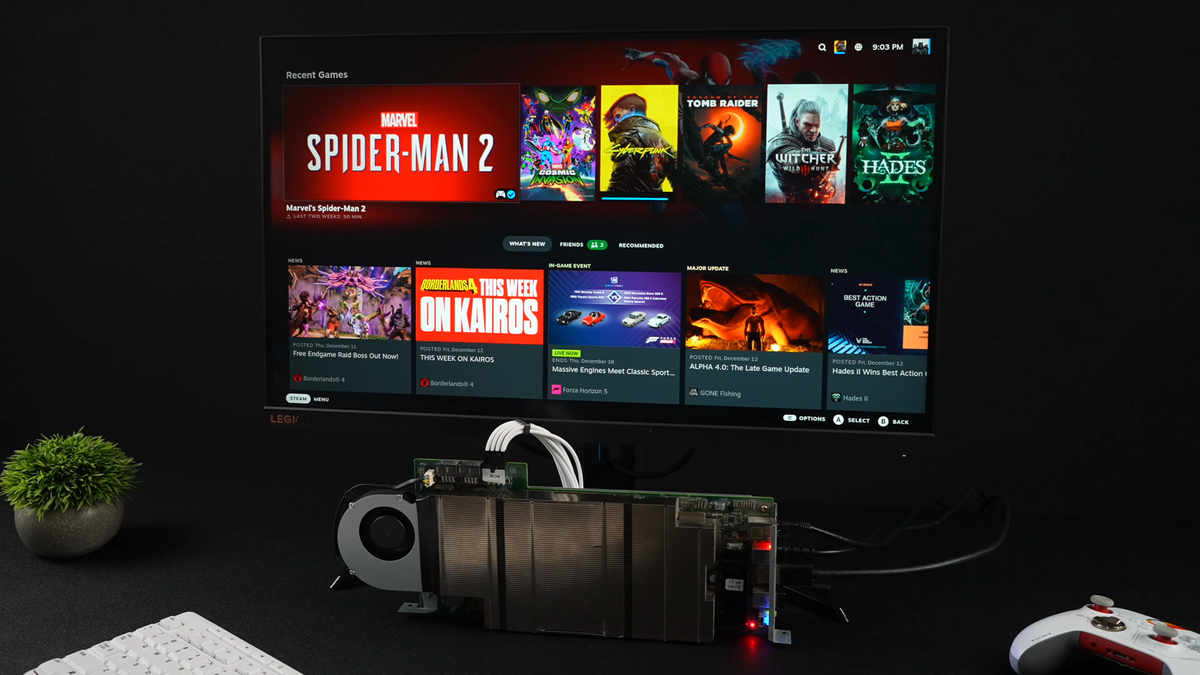There’s an app for everything. For tracking how many steps you take in a day; for watching your cat get into mischief while you’re at work; for drowning your friends in a constant stream of memes they’ll never look at. The list goes on, and, naturally, that very long list includes your wireless earbuds/headphones. Audio companion apps aren’t necessarily new—they’ve been around for a few years now—but they might as well be for most people who own Bluetooth earbuds or headphones.
And, you know what? I can’t say I blame anyone who doesn’t use or even know about their earbuds’ corresponding app. I am firmly in the camp of having way too many apps on my phone as it is, and the idea of adding one more feels absurd at best. If it weren’t for the fact that I need to know what those audio apps do for my job, I probably wouldn’t bother unpacking them, either. But that is what I do for a living, and I have bothered, and I’m here to tell you that you’re missing out.
Don’t You Dare Say “Bloatware”
There is an unwieldy world of app bloat out there, but don’t let that fool you when it comes to audio companion apps. If you can stomach adding one more app to your phone, you’ll be rewarded not just with extra features but sometimes with unlocking the true potential of the thing you purchased. One big way audio apps do that is through in-app hearing tests.
A major part of whether you like a pair of earbuds or headphones has nothing to do with the buds and everything to do with your personal hearing. Depending on your age and whether you spent a lot of time at loud concerts or working in construction, you hear frequencies differently than others. That means, in order to get the best possible sound out of a pair of earbuds or headphones, you need an audio device that tailors the EQ and tuning to your hearing. And on that front, plenty of earbuds can do just that… with the help of an app, of course.
 © Raymond Wong / Gizmodo The OnePlus Buds 4 have an excellent ear-tuning test.
© Raymond Wong / Gizmodo The OnePlus Buds 4 have an excellent ear-tuning test.Take the OnePlus Buds 4, a pair of earbuds that I recently reviewed. While the buds sound pretty good out of the box, it wasn’t until I bothered to download the OnePlus companion app and went through a short hearing test that I found out how good (exactly) they sound. It wasn’t night and day, but it was a huge improvement over the out-of-box tuning, which proves to me that personalized EQ isn’t just a gimmick. While all personalized EQ apps are a little different, they usually involve some test that plays a sound and then has you submit feedback on whether or not you can hear that sound. Using that profile, audio apps can then augment the frequencies you struggle with to create a fuller sound profile.
And while the OnePlus Buds 4 audio app is the last app I used to do a hearing test, it’s by no means the only one out there. If you’re a fan of Nothing’s earbuds, for example, you can download the Nothing X app and get cracking with that hearing test. Or, if you’re like many people out there and you use AirPods, Apple has its own version of custom EQ (built into iOS and not an app, per se) that it frames more as an accessibility feature. This five-minute hearing test only works with the AirPods Pro 2, though—sorry, literally everyone else.
But even if you can’t take advantage of a hearing test provided by an app directly, you can usually choose a custom EQ inside most apps that fits your particular hearing abilities. My recommendation, if your earbuds don’t have a hearing test built in, is to download the Mimi app and have it assess your hearing and then use those recommendations to custom equalize your buds. That’s a lot more involved than the former method, but believe me when I say it is worth the effort.
Sometimes More Is Actually Better
If you’re as skeptical of bloatware as I am, you might assume that any additional “content” inside your earbuds’ or headphones’ audio apps is absolute garbage, but I’m here to tell you that you may want to give that thought another think. Soundcore was the most recent company to surprise me with its audio companion app offerings, and there is a lot going on in there.
 © Raymond Wong / Gizmodo Soundcore’s companion app is full of treats for anyone who likes white noise.
© Raymond Wong / Gizmodo Soundcore’s companion app is full of treats for anyone who likes white noise.One of the coolest features inside Soundcore’s companion app is a whole lot of white noise. For some people, that may be a big shrug, but for those of us who absolutely, positively need white noise of some kind to get to sleep, it’s a veritable paradise. You can choose between white noise sounds with a nature theme like “Campfire Feast” or “Ocean Chime,” or even get scientific with “AI Brainwave Audio,” which takes advantage of binaural beats. If you’re not familiar, binaural beats are supposed to trick your brain into hearing certain frequencies that promote focus or relaxation. These are obviously all things you can just search on YouTube if you’re feeling the need to relax or tune out noise, but there’s something to be said about having them all in one place in an app that you got for free (no ad interruptions, either).
And beyond just enjoying free content, having a solid companion app also enables a whole new genre of devices like Soundcore Sleep A30 buds, which extend their battery life to 9 hours by being able to download sounds from their app and play them locally on the buds. Without that app-enabled feature, the earbuds get just 6.5 hours of battery life on a full charge—hardly enough for most people to consider a full night’s sleep. Not everyone will want earbuds to help them sleep, but again, without an app, the people who do want them may have a diminished experience.
Don’t get me wrong, it’s pretty clear that no one requires an app to enjoy listening through a pair of earbuds or headphones, but that doesn’t mean that ignoring them is the right move. The wireless audio market is incredibly saturated in the year of our lord 2025, which makes it annoying when you’re trying to sift through the chum and find out which pair is right for you. On the bright side, it has forced wireless audio companies to find ways of making their earbuds and headphones stand out, and a not-insignificant amount of that effort has gone into apps. If you’re wanting more from your wireless audio, give the apps an ear, because you might just like what you hear.








 English (US) ·
English (US) ·